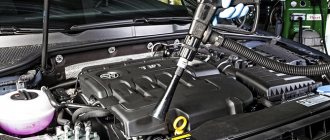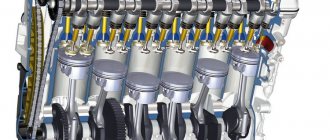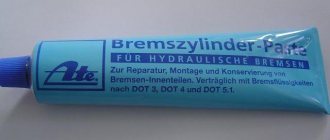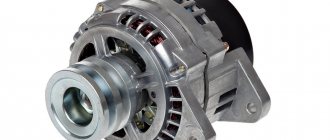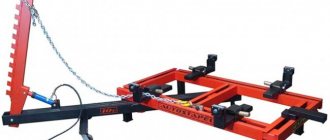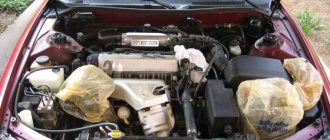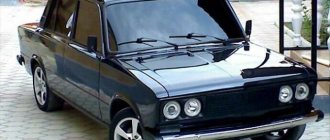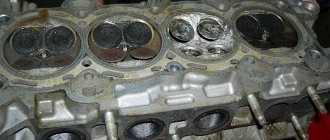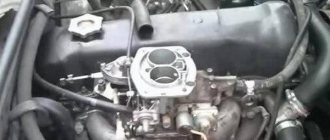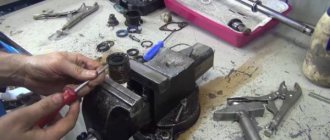Home » Repair
08/29/2019 Category: Repair
The cylinder block is manufactured using casting followed by machining. The bottom of the cylinder block is usually machined to fit the crankshaft main bearings into the block and to attach the oil pan. The distance between adjacent cylinders is of great importance. Increasing the distance makes it possible to increase the rigidity of the block and provide the possibility of increasing the engine displacement in the future by increasing the diameter of the cylinders (the easiest way to obtain modifications to engines of various powers). On the other hand, this leads to an increase in the overall dimensions of the engine and its weight.
Recently, some automobile engine manufacturers have been producing cylinder blocks in which adjacent cylinders are in contact with the walls (so-called Siamese blocks with “dry” liners). This method makes it possible to obtain a fairly rigid structure with a relatively small size. The rigidity of the cylinder block largely determines the noise characteristics of the engine.
Rice. Nordstar GM engine cylinder block with a “dry” liner.
A characteristic feature of modern highly loaded engines is the use of a support frame that secures the crankshaft. A high aluminum oil pan is attached to the support frame, which is maximally isolated from vibrations of the crank mechanism, which has a positive effect on engine acoustics. An additional function is performed by the contour of the crankshaft support frame. It acts as an oil deflector in the area of the crankshaft and connecting rod counterweights. Thus, the draining oil is not splashed across the walls of the entire engine block, but is captured and discharged directly into the sump.
Rice. Audi 4.2 l V8 TDI engine cylinder block: 1 – main oil line; 2 – cylinder block; 3 – support frame; 4 – aluminum oil pan; 5 – oil drain channels; 6 – bosses of the supporting frame; 7 – crankshaft
For a long time, the only material for making cylinder blocks was cast iron. This material is inexpensive, it has strength and rigidity with good casting properties. In addition, the honed internal surfaces of cast iron cylinders have excellent anti-friction properties and high wear resistance. Significant disadvantages of cast iron are its large mass and low thermal conductivity. The desire of designers to create lighter engines led to the development of cylinder block designs made of aluminum alloys. Aluminum is significantly inferior to cast iron in rigidity and wear resistance, so an aluminum block must have a large number of stiffeners, and cast iron liners are usually used as cylinders, which are inserted into the aluminum block during the assembly process, poured or pressed into it during manufacturing.
Engine block cooling system
In addition to the crank mechanism, the cylinder block includes a cooling “jacket”.
It serves to circulate coolant, that is, to remove thermal energy from the engine.
This ensures that the internal combustion engine operates at an optimal operating temperature. The cooling “jacket” is cut inside the cylinder block with a special tool.
To avoid clogging and coking, the coolant should be changed after a certain time, in accordance with the regulatory and technical documentation for the operation of the vehicle.
It is compiled by the manufacturer.
Tuning
Tuning the VAZ 2109 engine is quite simple and without any particular difficulties. So, the first thing motorists do to their engine is change the ignition system. Of course, on older models there is a contact version installed, which has long been obsolete, and therefore contactless is installed.
At the same time, spark plugs and high-voltage wires are changed. Don't forget about the ignition coil either. All this will give improved fuel combustion in the cylinders only if everything is configured correctly.
Next comes boring and reassembly of the cylinder block. So, many car enthusiasts install a sports piston version, which provides a lightweight crankshaft, pistons and connecting rods. Then, the guide bushings and valves are changed. All these modifications will give an increase in power by about 25-30 horses.
The last stage is external tuning. This may include: installing a zero-resistance air filter, overhauling the carburetor, replacing water cooling pipes, installing an improved pump and generator.
Do not forget about such an important element as the starter, a range of varieties that can be found in tuning stores. It is also recommended to replace the radiator with a lighter one, that is, install an aluminum one. All this will give more opportunities for the engine, and accordingly for the motorist.
"Aluminum" engines and their advantages
The use of modern technologies in production makes it possible to manufacture lightweight “aluminum” engines in which the cylinder block does not have cast iron liners. In the working surfaces of the cylinders in aluminum blocks, an increased silicon content is electrolytically created, and then the cylinders are chemically etched to create a wear-resistant porous film of pure silicon on the working surface of the cylinders, which retains lubricant well.
The working surfaces of the cylinders of modern aluminum engine blocks can be coated with plasma spraying. The powder sprayed onto the cylinder walls is fed through a plasmatron. The gas intended to create the plasma passes through the atomizer and is ignited by an electric arc. In this case, the gas temperature rises to approximately 11700°C and it passes into the plasma state. Powder particles in a molten state fill the uneven surface of the cylinder. When the particles solidify, they are securely connected to the walls of the cylinder. Additionally, compressive stress occurs inside the sprayed layer, which further strengthens the bond between the cylinder metal and the sprayed layer.
After spraying, as with traditional cylinder designs, honing is carried out, but in this case the risks due to honing are not so deep. A very smooth outer surface appears with small depressions (microdepressions) in which the oil is located. Each micro-groove is not connected to other micro-recesses, unlike the honing of cast iron sleeves. When the piston ring passes over the micro-recess, pressure is created in the latter, which acts on the piston ring. As a result, the piston ring floats on top of the oil cushion, which provides hydrodynamic lubrication. Thanks to this, friction and wear losses are significantly reduced.
We recommend: Do you need to warm up the engine before driving, in winter and summer?
The advantages of this method of manufacturing cylinders compared to conventional ones are:
- weight reduction compared to plug-in cylinder liner designs
- reduction in engine size compared to a cast iron cylinder block due to narrowing of the bridges between the cylinders
- Extended cylinder life thanks to wear-resistant plasma spray coating
Rice. Scheme of coating the cylinder walls with a plasmatron: 1 – plasma jet with sprayed powder; 2 – plasmatron; 3 – working surface of the cylinder
2.2.3 Basics of electrolysis of cryolite-alumina melts
Electrolysis of cryolite-alumina melts is the main method for producing aluminum, although some aluminum alloys are produced by electrothermal methods.
The first industrial electrolysers had a current strength of up to 0.6 kA and over the next 100 years it increased to 300 kA. However, this did not make significant changes to the fundamentals of the production process.
The general scheme of aluminum production is presented in Figure 5. The main unit is the electrolyser. The electrolyte is a melt of cryolite with a slight excess of aluminum fluoride, in which alumina is dissolved. The process is carried out at variable alumina concentrations from approximately 1 to 8% (wt.). A carbon anode, partially immersed in the electrolyte, is lowered into the bath from above. There are two main types of sacrificial anodes: self-baking and pre-baked. The first use the heat of electrolysis to fire the anode mass, consisting of a mixture of coke filler and a binder - pitch. Baked anodes are a pre-baked mixture of coke and pitch binder.
Figure 6 - Scheme of aluminum production from alumina.
Molten aluminum at the electrolysis temperature (950–960°C) is heavier than the electrolyte and is located at the bottom of the electrolyzer. Cryolite-alumina melts are very aggressive, which can be resisted by carbonaceous and some new materials. These are used to make the internal lining of the electrolyzer.
To convert alternating current into direct current, modern factories use semiconductor rectifiers with a voltage of 850V and a conversion coefficient of 98.5%, installed in a silicon converter substation (CPS). One rectifier unit produces a current of up to 63 kA. The number of such units depends on the required current strength, since they are all connected in parallel.
The process taking place in the electrolyzer consists of the electrolytic decomposition of alumina dissolved in the electrolyte. At the liquid aluminum cathode, aluminum is released, which is periodically poured out using a vacuum ladle and sent to the foundry department for casting or mixer, where, depending on the further purpose of the metal, alloys with silicon, magnesium, manganese, copper are prepared or refining is carried out. Oxidation of carbon by the released oxygen occurs at the anode. The anode exhaust gas is a mixture of CO2 and CO.
Electrolyzers are usually equipped with covers that remove waste gases and a cleaning system. This reduces the release of harmful substances into the atmosphere. The technological process requires that the shelter be sealed to ensure gas is sucked into the collector using fans. The gases removed from electrolyzers are dominated by carbon dioxide (most of the carbon monoxide is burned either above the electrolyte or in special burners after the gas collection bell), nitrogen, oxygen, gaseous and solid fluorides and alumina dust particles. To remove them and return them to the process, various technological schemes are used.
Modern electrolyzers are equipped with an automatic alumina feed system (AGS) with a loading period of 10–30 minutes.
The overall reaction occurring in the electrolyzer can be represented by the equation
Thus, theoretically, the electrolysis process consumes alumina and carbon from the anode, as well as electricity necessary not only to carry out the electrolytic process - the decomposition of alumina, but also to maintain a high operating temperature. In practice, a certain amount of fluoride salts are also consumed, which evaporate and are absorbed into the lining. The amount of raw materials to produce 1 ton of aluminum is presented in Table 10:
Table 10 - Amount of raw materials to produce 1 ton of aluminum
| alumina, kg | 1925 – 1930 |
| anode carbon, kg | 500 – 600 |
| fluoride salts, kg | 50 – 70 |
| electricity (AC), kWh | 14500 – 17500 |
Aluminum production is one of the most energy-intensive processes, so aluminum smelters are built near energy sources.
All materials supplied for electrolysis must have a minimum amount of impurities that are more electropositive than aluminum (iron, silicon, copper, etc.), since these impurities are almost completely converted into metal during electrolysis.
2.2.4 Electrothermal production of aluminum-silicon alloys
It is impossible to obtain pure aluminum by direct reduction of its oxide. Carbothermic processes require high temperatures (about 2000°C) to reduce alumina and, in the absence of alloy-forming components, the metal binds with carbon, giving aluminum carbide (A14 C3). It is known that aluminum carbide and aluminum are soluble in each other and form very refractory mixtures. In addition, A14 C3 dissolves in A12 O3, therefore, as a result of the reduction of aluminum oxide with carbon, mixtures of aluminum, carbide and oxide are obtained that have high melting points. It is usually not possible to release such a mass from the oven. Even if this can be done, large separation costs will be required.
In our country, for the first time in the world, a method for producing silicon aluminum (aluminum-silicon alloys) was developed and implemented on an industrial scale with fairly high technical and economic indicators.
The general technological scheme for the production of aluminum-silicon alloys is presented in Figure 7. As a starting material, in addition to kaolins (Al2 O3 ×2SiO2 ×2H2 O), kyanites (Al2 O3 ×SiO2), distensillimanites (Al2 O3 ×SiO2) and low-iron bauxite.
After electric melting, the alloy is sent for purification from non-metallic impurities. To do this, a flux consisting of a mixture of cryolite and sodium chloride is supplied, which wets these impurities and “collects” them. Refined silicoaluminum has an average composition (%): A1 – 61; Si – 36; Fe – 1.7; Ti – 0.6; Zr – 0.5; Ca – 0.7. This alloy is not suitable for the production of silumin and requires purification from iron. The most common cleaning method is manganese, which forms refractory intermetallic compounds with iron.
Figure 7 — General scheme for the production of aluminum-silicon alloys
The resulting alloy is diluted with technical electrolytic aluminum or secondary aluminum to a composition that corresponds to various types of silumins, and poured into ingots.
The advantages of this method of producing silumin over the fusion of electrolytic aluminum with crystalline silicon are as follows: greater power of a single unit - modern furnaces have a power of 22.5 MB×A, which is approximately 30 times higher than the power of a 160 kA electrolyzer, and, consequently, a reduction in cargo flows , reducing capital costs and labor costs; the use of raw materials with a low silicon module, the reserves of which in nature are quite large.
Theoretically, pure aluminum can be separated from an aluminum-silicon alloy using various techniques. However, due to the complexity of the hardware and technological design, these methods are not currently being implemented in industry.
What is the engine block made of?
The most common material used in production is cast iron. This is the traditional option. In second place is aluminum. Or rather, its various alloys. Well, there is also a rather exotic material - magnesium alloy. Now about all three options - in more detail.
Cast iron
This is a traditional material; this part has been made from it for many decades.
Cast iron was used with additives: nickel, chromium. Among the positive qualities of a cast iron product are: less sensitivity to overheating, rigidity, which is very important when boosting the engine.
The device mainly operates under frequent temperature changes, so cast iron products are a priority. The main disadvantage is the significant weight, which worsens the dynamics of a passenger car.
Aluminum
It has such positive properties as optimal engine cooling and low weight. It is in second place in terms of the number of cylinder blocks produced. A special feature of the aluminum design is the installation of sleeves.
Today, to perform this operation, two technologies are mainly used: Locasil and Nicasil. In the first case, sleeves made of an aluminum-silicon alloy are pressed in; in the second, a nickel coating is applied. The second technology has a significant drawback - if, for example, a piston burns out, a connecting rod breaks off, or the nickel coating fails, then the product cannot be repaired.
We recommend: Motul oil
Also, nicosil technology does not provide for boring; the entire assembly has to be replaced. It is clear that in this case the car owner has to fork out a substantial amount.
Magnesium alloy
The engine cylinder block made from it is as hard as cast iron and light as aluminum. True, such a product is expensive, and for this reason it is not used in conveyor production, although it combines the best qualities of cast iron and aluminum. As you can see, each of the materials mentioned has certain pros and cons, but it would be incorrect to say that any of them is better.
Specifications
All engines that were installed on the VAZ 2109 were small in volume, but had sufficient power characteristics and dynamics. But things didn’t work out with the traction power. The engine power of the VAZ 2109 ranges from 54 to 81 horsepower. It is worth considering each engine option and its technical characteristics separately.
2111-80 (1.5i 8V)
11183-20 (1.6i 8V)
As you can see, the evolution of engines has come from the carburetor type to the injection type. Although with an increase in engine volume, fuel consumption also increased proportionally.
Another important fact remains the question: where is the engine number on old models of engines? As you know, the engine number was stamped on the cylinder block only from 1984 and on earlier versions that were exported. Therefore, you shouldn’t even look for this identifier on a 1983 power unit, since it simply doesn’t exist.
Overview of main parts
Engine cylinder
The main part of an engine cylinder is the liner.
There are two types of sleeves:
- pressed sleeves (in an aluminum block);
- removable sleeves - they are “wet” and “dry”.
Cylinder head - cylinder head
It is secured on top of the structure with guide pins and cylinder head bolts. A very important detail is the block gasket; it is located between the cylinder head and the block itself. It is made from asbestos-metal, metal, or maybe non-asbestos.
The cylinder head consists of: a combustion chamber, timing mounting points, a cooling jacket, lubrication channels, threaded holes of spark plugs (injectors), holes in the intake and exhaust channels.
Separately, it is worth mentioning the cylinder head mounting technology. For this purpose, special fastening bolts are used, and the operation itself is performed according to the manufacturer’s instructions. In particular, you need to tighten the head with a torque wrench, observing the tightening torque and using the bolt tightening diagram.
Crankcase
The crankcase is considered part of the block and is attached to it from below. Closed with a tray. That is, the crankcase can be called the body of the crank mechanism.
The cylinder block body also has holes and channels for lubrication and cooling. The drain plug is needed to drain the coolant. Engine oil is drained after removing the plug in the oil pan. A place is provided for the camshaft drive. It is closed at the front by the cylinder block cover. The crankshaft main bearing supports are located below.
Now that you have become familiar with the design of an engine cylinder block, share your new knowledge with your friends on social networks. Let them also subscribe to our blog and get acquainted with the fascinating world of automotive technology.
Source
Block head and timing device
All front-wheel drive cars of the VAZ family, be it 2109, 2110 or 2114, have one cylinder head, common to all cylinders. They are mounted to the block using ten screws. During installation, a metal gasket is placed under it. This gasket is for single use and cannot be reused. There are five camshaft bearings at the top of the cylinder head.
The camshaft of the engine of the VAZ-2109 car has the index 21083. Some engines are equipped with 2110 or 2111 shafts; their design is slightly different from 21083, which allows for an increase in engine power. The shaft is cast from cast iron, there are five supports and eight cams on it that open the valves. It is driven by a toothed belt from the crankshaft pulley. The shafts can be correctly installed relative to each other using the alignment lug on the rear timing belt cover and the marks on the drive gears and flywheel.
Seats are pressed into the cylinder head, as well as valve guides. On the inside of the bushings there are grooves for supplying lubricant; the bushings are closed on top with oil deflector caps.
The valves are made of steel, and the intake head is made of heat-resistant steel. They are mounted obliquely in one row. The inlet valve has a larger diameter than the outlet valve. The gaps between the valves and camshaft cams are adjusted using shims that have increased wear resistance.
Pushers are metal cups moving in the cylinder head holes. To improve wear resistance, the surface in contact with the ends of the valve stems is cemented.
What to consider when replacing an engine
The ideal option for the “nines” is, of course, a similar engine. But in the case when a complete modernization of the machine is carried out, its power will not be enough. The most suitable option would be the 16-valve VAZ-2112 engine, which has more horses and a newer design.
And you can safely install an air conditioning compressor on such an engine, and your car will be fresh and cool even in terrible heat. You can also install air conditioning on a standard Nine engine, even if it’s 1.5 liters, but there will be a noticeable lack of horses. In addition, the generator will have to be replaced, as the power of consumers increases.
The good thing is that the VAZ-2112 engine fits perfectly with the Nine gearbox. Also, a good tuning option is to install an engine from a Priora, a more modern Lada model. As for foreign engines, the Hyundai Accent engine fits perfectly under the hood of the Nine, but it is advisable to take the gearbox from the Accent. With the Opel Vectra, the power unit is also suitable for tuning.
What else should be changed and done
You increase the engine power. Therefore, it is necessary to use more pads in the brake system. An ideal option would also be to replace the rear ones with disc ones. Changes should also be made to the cooling system. Install a radiator that is designed for a new engine. It is quite possible that the volume of the VAZ-2109 cooling radiator will not be enough.
Be that as it may, you must have documents for the engine. If you buy it secondhand, ask the seller for a document confirming ownership. You should not buy a motor of unknown origin, as it can be removed from a car that is listed as stolen. If you purchase, the selling company will provide you with both a guarantee and a full package of documents. But registering the alteration with the traffic police depends entirely on your desire. The ideal option is to contact the traffic police with a request to register a new engine.
